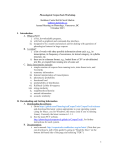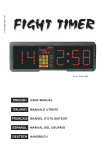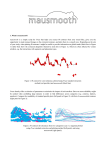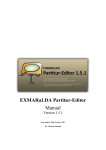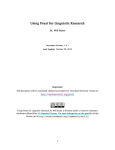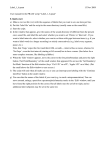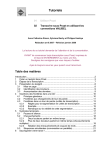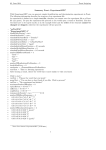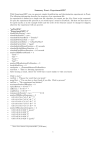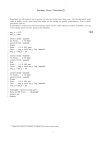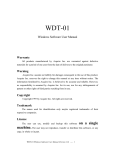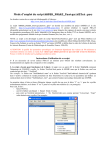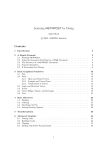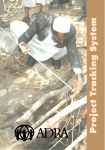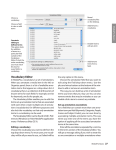Download 24. June 2014 Praat Scripting Summary Praat: Controlling the User
Transcript
24. June 2014
Praat Scripting
Summary Praat: Controlling the User - Pauses
1
1. Controlling the user
You can temporarily halt a Praat script
pause text
suspends execution of the script, and allows the user to interrupt it; a message window will
appear with the text and the buttons Stop and Continue
pause The next file will be beerbeet.TextGrid
You can also include the same kinds of arguments as for a form. But to do so, you have to use a
different syntax!
1
2
3
4
5
6
7
8
9
10
11
12
13
14
15
16
17
for i to 5
Read from file: "sound" + string$ (i) + ".wav"
Play
Remove
beginPause: "Rate the quality"
comment: "How good is the sound on a scale from 1 to 7?"
choice: "Quality", 4
option: "1"
option: "2"
option: "3"
option: "4"
option: "5"
option: "6"
option: "7"
endPause: if i = 5 then "Finish" else "Next" fi, 1
appendInfoLine: quality
endfor
rows 5-15
1 Reference:
use the "new" syntax as already known from our other scripts, this is different to the
syntax of the forms
Praat User Manual - Scripting 6.6 Controlling the user [13.06.2014]
1
24. June 2014
row 15
Praat Scripting
if i equals 5 the button to proceed will change from Next to Finish; the end of the
argument fi equals the endif command used within a script; 1 defines the button
that is highlighted
File
selection
:::::::::::
If you want the user to choose a file name for reading (opening), use the following. . .
1
2
3
4
fileName$ = chooseReadFile$: "Open a table file"
if fileName$ <> ""
table = Read Table from tab-separated file: fileName$
endif
A window will appear and the user will be able to choose a (here:) table file. If the user clicks OK,
the variable fileName$ will contain the name of the file that the user selected. If the user clicks
Cancel, the variable will contain an empty string ("").
Do the following if you want the user to choose a file name for writing (saving). . .
1
2
3
4
5
selectObject: "Sound example"
fileName$ = chooseWriteFile$: "Save as a WAV file", "example.wav"
if fileName$ <> ""
Save as WAV file: fileName$
endif
A window will appear and the user will be able to choose an appropriate file name (in this example
a file name has been suggested: example.wav). If the user clicks OK, the form will ask for confirmation if the file name that the user typed already exists. If the user clicks OK with a new file
name, or clicks OK in the confirmation window, the variable fileName$ will contain the file name
that the user typed; if the user clicks Cancel at any point, the variable fileName$ will contain the
empty string ("").
If you want the user to choose a directory (folder) name, do the following. . .
1
2
3
4
5
6
7
directoryName$ = chooseDirectory$:"Choose a directory to save all the new files in"
if directoryName$ <> ""
for i to numberOfSelectedSounds
selectObject: sound [i]
Save as WAV file: directoryName$ + "/sound" + string$ (i) + ".wav"
endfor
endif
A window will appear and the user will be able to choose a directory. If the user clicks OK, the
variable directoryName$ will contain the name of the directory that the user selected; if the user
clicks Cancel, the variable directoryName$ will contain the empty string ("").
2. Exercise
Write a script that. . .
a) . . . reads in all sound files of a directory
b) . . . creates a TextGrid for each WAV file
c) . . . pauses the script so the user can segment and annotate within the TextGrid
d) . . . continues when the user finished annotating
e) . . . saves the TextGrid and checks whether a TextGrid with the same name already exists (see
fileReadable); if it does, pause the script to rename the object
2


